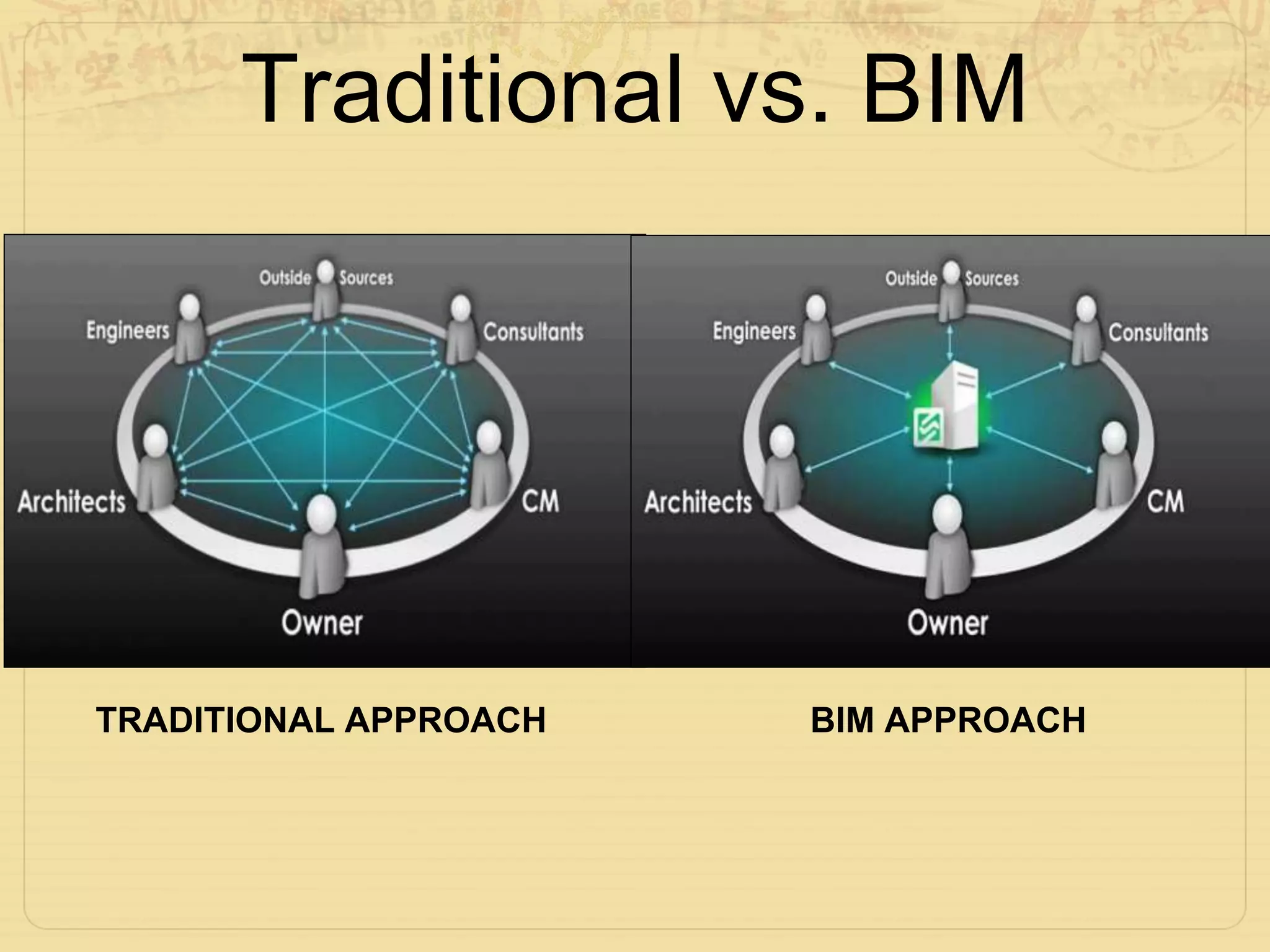Enter Building Information Modeling, a digital approach that transcends the limitations of traditional methods. BIM is a comprehensive process that involves creating and managing digital representations of the physical and functional characteristics of places. Unlike traditional methods, which rely heavily on 2D drawings and manual coordination, BIM encompasses a three-dimensional, intelligent model that offers a holistic view of the project.
In the dynamic construction world, the clash between Building Information Modeling (BIM) and traditional methods is akin to a battle of titans. Why is BIM gaining momentum, and how does it surpass traditional approaches? Let’s explore these construction giants’ intricacies, pitfalls, and triumphs.
What Makes BIM Stand Out?
1. Digital Transformation:
- Traditional: Relies heavily on 2D blueprints and manual documentation.
- BIM: Using 3D models to make a digital copy of a building, showing it more accurately and in a more fascinating way.
2. Data Integration:
- Traditional: Information is spread out in different papers and with different people.
- BIM: Brings together information from different places, making it easy for everyone to work together with the latest information.
3. Collaboration and Communication:
- Traditional: There are often gaps in communication and chances for misunderstandings.
- BIM: Facilitates collaboration by offering a shared platform where architects, engineers, contractors, and other stakeholders collaborate in real-time.
4. Lifecycle Management:
- Traditional: Primarily focuses on the construction phase, often neglecting the entire lifecycle.
- BIM: Encompasses the entire lifecycle, from design and construction to maintenance and eventual decommissioning, promoting sustainability and long-term planning.
5. Risk Mitigation:
- Traditional: Changes or discrepancies may lead to rework and delays.
- BIM: Identifies clashes and issues during the design phase, reducing the likelihood of errors during construction and minimizing costly modifications.
6. Fabrication and Simulation:
- Traditional: Limited ability to visualize the final product before construction commences.
- BIM: Empowers stakeholders with 3D visualization and simulation, enabling informed decisions and better project outcomes.
7. Cost Evaluation and Analysis:
- Traditional: Cost estimates may lack precision due to limited data.
- BIM: Provides more accurate cost projections by analyzing data and simulating various scenarios during the planning stage.
How BIM Enhances Efficiency Compared to Traditional Methods
Building Information Modeling (BIM) is like a superhero in the construction world, bringing a big wave of efficiency. It’s way better than the old-fashioned methods we used to use. Imagine BIM as a smart tool that helps builders and designers work together smoothly. It’s like having a high-tech blueprint that shows every little detail about a building before it’s even built. With BIM, things get done faster and more accurately, making construction a breeze! Here’s why BIM shines:
1. Precision in Planning:
- BIM: Utilizes 3D modeling and simulation, resulting in detailed and precise project representations.
- Traditional: Often relies on 2D drawings, leading to discrepancies and rework during construction.
2. Resource Optimization:
- BIM: Real-time data-driven resource management ensures optimal allocation.
- Traditional: Struggles with suboptimal resource utilization due to limited data insights.
3. Environmental Considerations:
- BIM: Integrates sustainability analysis tools, allowing for better evaluation and control of environmental impact.
- Traditional: Lacks efficient mechanisms for assessing and managing environmental factors.
4. Overall Efficiency:
- BIM’s advantages in visualization, collaboration, and resource optimization contribute to improved efficiency and reduced rework, potentially saving costs and time.
5. Future-Proofing:
- BIM’s adaptability to industry trends and technological advances positions it as a more future-proof construction methodology compared to traditional approaches.
Conclusion
Although traditional methods and BIM both have good points, BIM Modeling Services is seen as the better and more modern way, especially in today’s fast-changing construction world. It connects old and new ways, making a strong base for great construction work.
For more information about engineering, architecture, and construction, check out the Pinnacle IIT Blogs, where innovation meets reality.
Discover more about how we’re shaping the future of infrastructure and design at Pinnacle IIT.
Subscribe to our YouTube Channel and blog post page to get all the latest updates in the world of construction.

